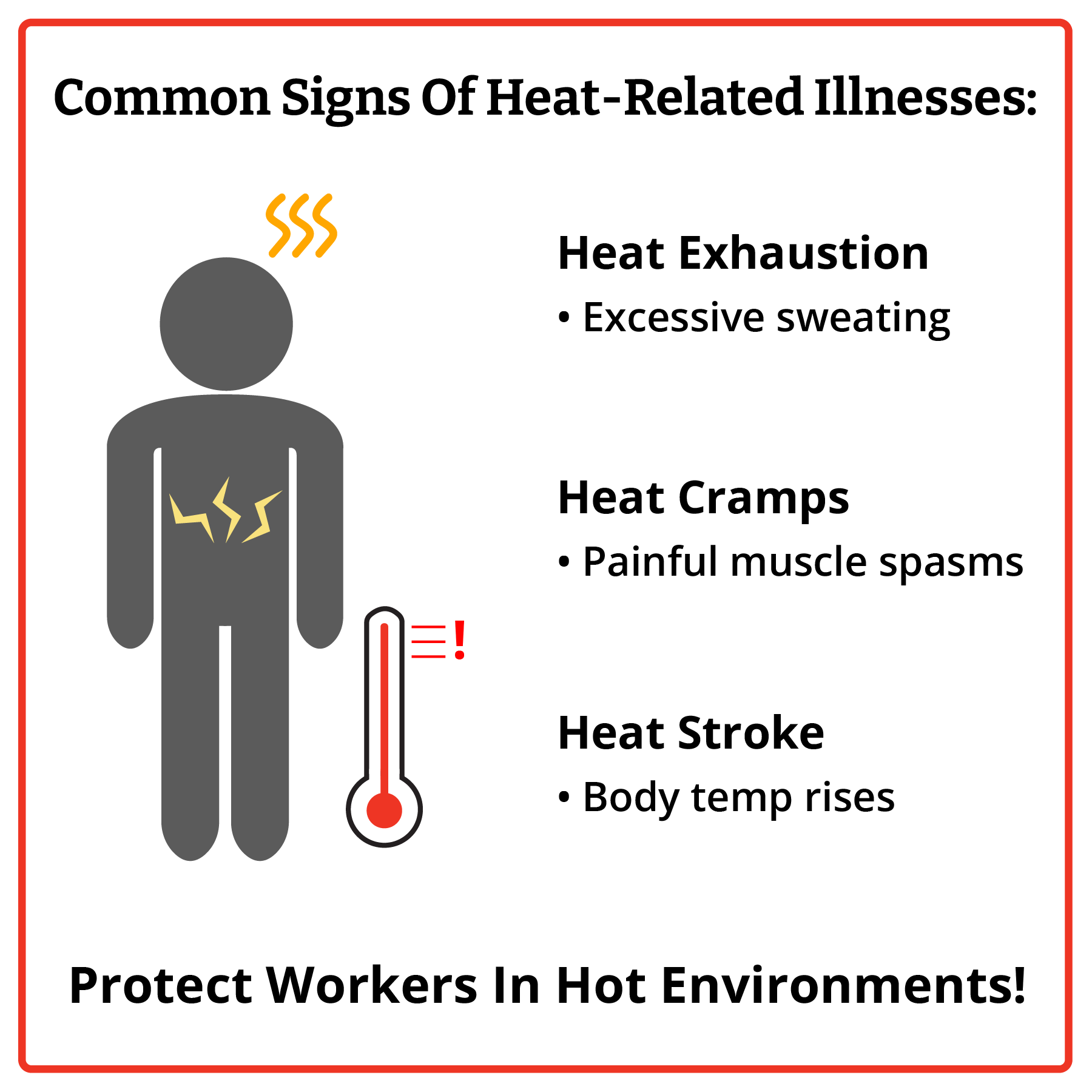
Knowledge Base / News / Safety & Compliance
 With summer’s heat rapidly approaching, it’s vital to be aware of the dangers of extreme temperatures, especially in workplaces where outdoor activities are frequent. Every year, thousands of workers suffer from heat-related illnesses, and many of these cases could have been prevented with proper awareness and precautions. The National Integrated Heat Health Information System (NIHHIS) recognizes this and has designated a week dedicated to Heat Safety Awareness, urging businesses and workers to take necessary steps to protect themselves from the risks associated with high temperatures.
With summer’s heat rapidly approaching, it’s vital to be aware of the dangers of extreme temperatures, especially in workplaces where outdoor activities are frequent. Every year, thousands of workers suffer from heat-related illnesses, and many of these cases could have been prevented with proper awareness and precautions. The National Integrated Heat Health Information System (NIHHIS) recognizes this and has designated a week dedicated to Heat Safety Awareness, urging businesses and workers to take necessary steps to protect themselves from the risks associated with high temperatures.
Before delving into heat safety measures, it’s important to understand the various heat-related illnesses that can affect individuals working in hot environments:
Heat Safety Awareness Week is an annual event designed to raise awareness about the dangers of heat-related illnesses and promote safety measures that businesses and workers can implement to stay safe during hot weather. This year, it is observed the week of April 29 through May 3rd, with a focus on providing information and resources to help employers and workers prevent heat-related illnesses.
Businesses have a responsibility to ensure the safety and well-being of their employees, especially when working in hot environments. Here are some tips for businesses to help prevent heat-related illnesses among their workforce:
 The Occupational Safety and Health Administration (OSHA) provides guidelines and regulations to help employers protect their workers from heat-related illnesses. Under the General Duty Clause, Section 5(a)(1) of the Occupational Safety and Health Act of 1970, all employers are required to provide their employees with a place of employment that “is free from recognized hazards that are causing or likely to cause death or serious harm to employees.” This means that employers have a legal obligation to provide a workplace free of conditions or activities that either the employer or industry recognizes as hazardous and that cause, or are likely to cause, death or serious physical harm to employees when there is a feasible method to abate the hazard. This includes heat-related hazards that are likely to cause death or serious bodily harm. Furthermore, many states run their own OSHA-approved State Plans with even stricter regulations. California, Colorado, Minnesota, Oregon and Washington have standards for heat exposure.
The Occupational Safety and Health Administration (OSHA) provides guidelines and regulations to help employers protect their workers from heat-related illnesses. Under the General Duty Clause, Section 5(a)(1) of the Occupational Safety and Health Act of 1970, all employers are required to provide their employees with a place of employment that “is free from recognized hazards that are causing or likely to cause death or serious harm to employees.” This means that employers have a legal obligation to provide a workplace free of conditions or activities that either the employer or industry recognizes as hazardous and that cause, or are likely to cause, death or serious physical harm to employees when there is a feasible method to abate the hazard. This includes heat-related hazards that are likely to cause death or serious bodily harm. Furthermore, many states run their own OSHA-approved State Plans with even stricter regulations. California, Colorado, Minnesota, Oregon and Washington have standards for heat exposure.
As we near the summer months, it’s crucial for businesses and workers to take proactive steps to prevent heat-related illnesses. By following best practices and staying informed about heat safety, employers can protect their workers and ensure a safe and healthy work environment.
If you have any questions about heat safety and how to best prepare with Room Alert, please contact us today through email at Sales@RoomAlert.com, through our online Live Chat service, or via phone at 401.628.1600.

You may find Windows Command Prompt at the following path:
To run Windows Command Prompt as an administrator:
| Current S models | Current E models |
|---|---|
| Room Alert 32S | Room Alert 32E |
| Room Alert 12S | Room Alert 12E |
| Room Alert 3S | Room Alert 4E |
| Room Alert 3E | |
| S models | E & W models |
|---|---|
| Room Alert 32S | Room Alert 32E |
| Room Alert 12S | Room Alert 12E |
| Room Alert 3S | Room Alert 4E |
| Room Alert 3E | |
| Room Alert 3W |
| Model |
|---|
| Room Alert MAX |
| Room Alert 32S |
| Room Alert 12S |
| Room Alert 3S |
| Room Alert 32E/W |
| Room Alert 12E |
| Room Alert 4E |
| Room Alert 3E |
| Room Alert 3 Wi-Fi |